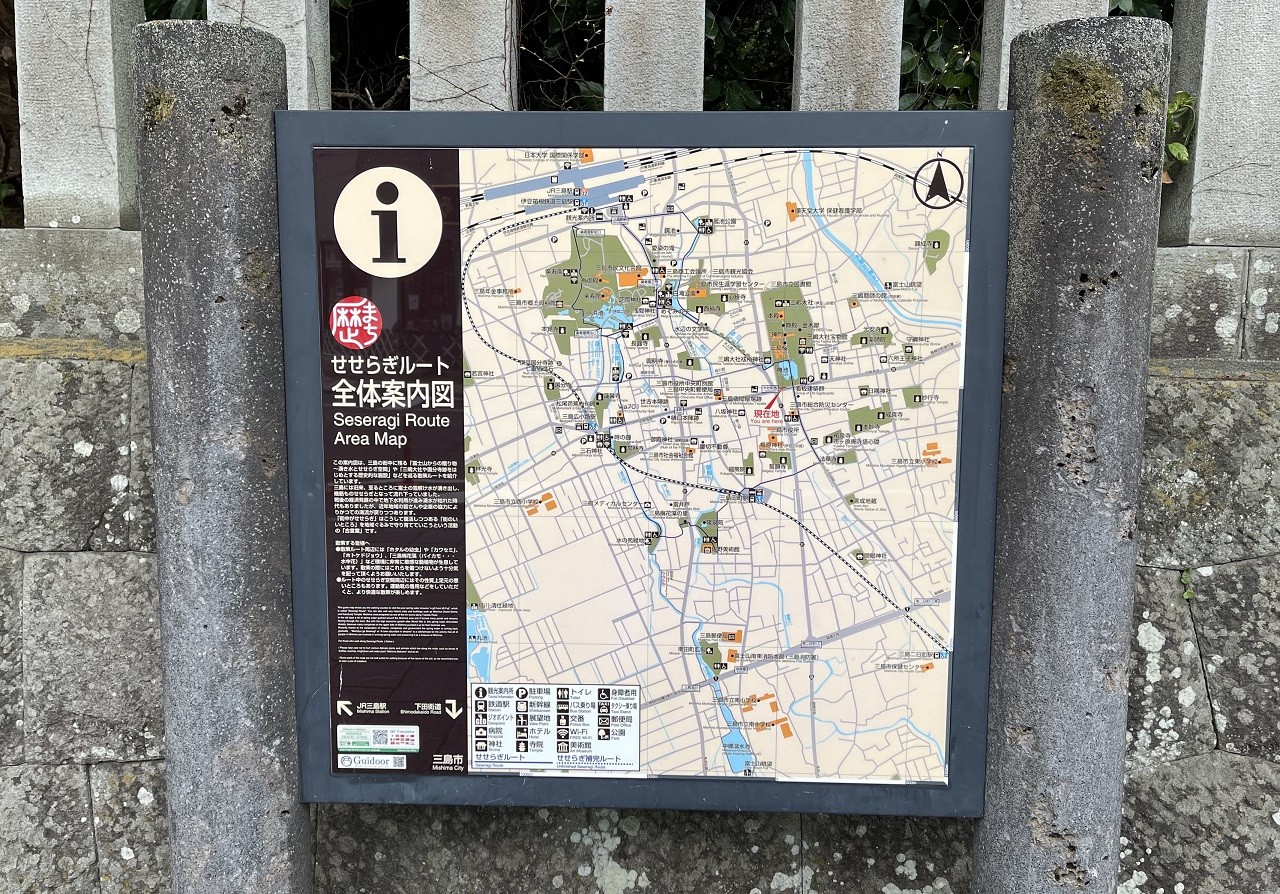Mishima Taisha Shrine ③

Seseragi Walking route / (D) Mishima Taisha Shrine Area
Recommended Spots Nearby
Rakujuen Park

The Rakuju Garden was built as a second villa for Prince Komatsunomiya-Akihito.
The entire garden and buildings stand on the top of the Mishima lava that flowed from Mount Fuji, about ten thousand years ago.
House of Mishima Lunar Calendar Publisher

The “House of Mishima Lunar Calendar Publisher” is a small museum that introduces the “Mishima-goyami calendar” that is a Japan’s oldest calendar as a printed calendar with kana characters.
It is located 300 m east of the Mishima Taisha Shrine.
Old Kamakura Road

The “Kamakura Kodo” is a road that was developed to connect Kyoto and Kamakura when "Minamoto no Yoritomo" started Japan’s first Shogunate regime in Kamakura (Kamakura Shogunate), and it became the essential road for east-west traffic.
Riverside’s Literature Monuments (Mizukami-dori Road)

On the Mizukami-dori Street along the Sakuragawa River from Mishima Station to Mishima Taisha Shrine, there are 12 monuments of literary figures related to Mishima city, including the world-famous writers such as Dazai Osamu and Wakayama Bokusui.
The ruins of "Toiyaba (Administration office in Edo period)"

Mishima town flourished as the 11th post town on the “Tokaido road” that was the most important of the Five Routes of the Edo period in Japan, connecting Kyoto to Edo (Tokyo).
Back to "Mishima City"


